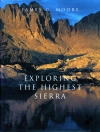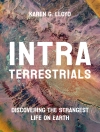HANDBOOK OF ARCHAEOLOGICAL SCIENCES
A modern and comprehensive introduction to methods and techniques in archaeology
In the newly revised Second Edition of the Handbook of Archaeological Sciences, a team of more than 100 researchers delivers a comprehensive and accessible overview of modern methods used in the archaeological sciences. The book covers all relevant approaches to obtaining and analyzing archaeological data, including dating methods, quaternary paleoenvironments, human bioarchaeology, biomolecular archaeology and archaeogenetics, resource exploitation, archaeological prospection, and assessing the decay and conservation of specimens.
Overview chapters introduce readers to the relevance of each area, followed by contributions from leading experts that provide detailed technical knowledge and application examples.
Readers will also find:
* A thorough introduction to human bioarchaeology, including hominin evolution and paleopathology
* The use of biomolecular analysis to characterize past environments
* Novel approaches to the analysis of archaeological materials that shed new light on early human lifestyles and societies
* In-depth explorations of the statistical and computational methods relevant to archaeology
Perfect for graduate and advanced undergraduate students of archaeology, the Handbook of Archaeological Sciences will also earn a prominent place in the libraries of researchers and professionals with an interest in the geological, biological, and genetic basis of archaeological studies.
Table of Content
Section 1. Dating
Overview
Quaternary geochronological frameworks
New developments in Radiocarbon dating
Dendrochronology and archaeology
Trapped charge dating and archaeology
U-series dating
Archaeomagnetic dating
Obsidian hydration dating with SIMS
Amino acid dating
An introduction to tephrochronology and the correlation of sedimentary sequences using volcanic ash layers
Section 2. Quaternary Palaeoenvironments
Overview
Modelling Quaternary Palaeoclimates
Ice core and marine sediment records of Quaternary environmental change
Insects as palaeoenvironmental and archaeological indicators
Non-marine molluscs as palaeoenvironmental indicators
Mammals as palaeoenvironmental indicators
Lake and peat records of climate change and archaeology
Archaeological soil micromorphology
Pollen and macroscopic plant remains as indicators of local and regional environments
Environmental controls on human dispersal and adaptation
Holocene climate changes and human consequences
Section 3. Human Bioarchaeology
Overview
Hominin evolution
Biological distance (normal variation/non-metrical and metrical analysis)
Palaeopathology
Integrating bioarchaeology and palaeodemography
Palaeodiet through stable isotope analysis
Palaeomobility through stable isotopes
Preserved human bodies
Cremated bone
Section 4. Biomolecular Archaeology
Overview
Zooarchaeology by mass spectrometry (Zoo MS)
Archaeological proteomics
The use of immunological methods in archaeology
Lipids in archaeology
Archaeological microbiology
Dental calculus
The biomolecular archaeology of psychoactive substances
Section 5. Archaeogenetics
Overview
Sex and kinship typing of human archaeological remains
Human populations ? origins and movement
Palaeogenomics of extinct and archaic humans
Palaeogenetics and palaeogenomics to study the domestication of animals
Domestication of plants
Palaeomicrobiology of human infectious diseases
Section 6. Biological Resource Exploitation
Overview
Archaeobotany
Human impact on vegetation
Zooarchaeology
Coprolites/intestinal contents
Invertebrates
Secondary animal and plant products
Section 7. Inorganic Resource Exploitation
Overview
Lithic exploitation and usewear analysis
Ancient binders and pigments
Materials analysis of ceramics
The archaeometry of glass
Mining and resource procurement: methods and approaches to the appropriation of mineral raw materials in past societies
Making and using metals
Provenancing inorganic materials: biography and mutability
Section 8. Archaeological Prospection
Overview
Approaches to archaeological surface survey
Geophysical survey techniques
Remote sensing/LIDAR
Geochemical prospecting
Integrating survey data
Section 9. Burial, Decay and Archaeological Conservation
Overview
Defining the burial environment
Metallic corrosion processes and information from corrosion products
Post-depositional changes in archaeological ceramics and glass
Deterioration of organic materials
Diagenetic alterations to vertebrate mineralized tissues
Forensic taphonomy
Section 10. Statistical and Computational Methods
Overview
Spatial information in archaeology
Multivariate analysis in archaeology
The Bayesian inferential paradigm in archaeology
Quantification in zooarchaeology and palaeoethno(archaeo)botany
The use of kernel density estimates on chemical and isotopic data in archaeology
Modelling/Simulations in archaeology
Big data in archaeology
About the author
A. Mark Pollard, Professor Emeritus, University of Oxford, United Kingdom.
Ruth Ann Armitage, Department of Chemistry, Eastern Michigan University, United States.
Cheryl A. Makarewicz, Institute for Prehistoric and Protohistoric Archaeology, University of Kiel, Germany.












